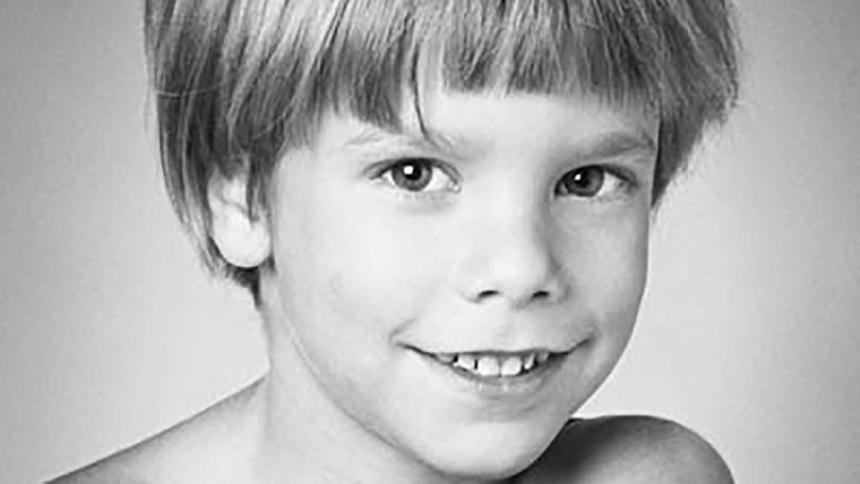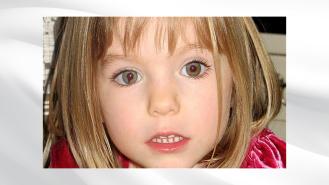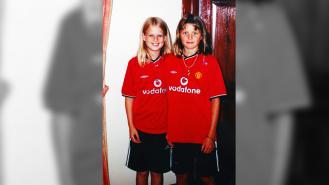
The Disappearance of Etan Patz
On Friday, May 25th 1979, six-year-old Etan Patz woke up and dressed himself in blue pants, a blue jacket, blue sneakers and his prized possession, his black Eastern Airlines future flight captain hat. His mid-length blonde hair peeked out from beneath the cap as he promised his mother Julie, ‘It’s fine, mom, I can do it’.
Just before 8am, Julie Patz, walked her son down 3 flights of stairs, kissed him goodbye and watched from the entrance to their apartment block in SoHo as he made the short 2 block journey to the bus stop by West Broadway. Julie went back up to the apartment where she was busy taking care of her 2-year-old son and another toddler. Stanley, Etan's father was a photographer getting ready for work, and their older daughter Shira who attended a different school than her little brother was getting ready for her day.
Julie ran a daycare from their apartment on Prince Street where the family had lived for 8 years. When Etan didn’t come home that afternoon Julie began looking for him in the neighbourhood that had felt so safe just a few hours earlier. She rang the mother of one of Etan's closest friends. It was then that she learned that Etan had never come to school, he never even made it on the bus.
A search for the 6-year-old was launched with close to 100 police officers and a pack of bloodhounds canvassing the lower Manhattan area. The apartment that was once a busy daycare centre then became the headquarters in the search for Etan. The last time anyone saw Etan was around 8am at the corner of Prince and Wooster Street. He was carrying a tote bag imprinted with an elephant design and walking in the direction of the bus stop. After that, there was no trace of the little boy.
The SoHo community and the majority of New Yorkers were out in force trying to find Etan and bring him home but the family became 'pariahs'. Within a month the police search team went from 500 officers strong to just 4 detectives from the missing person's squad.In a June 1979 interview with the New York Times Julie said;
'The community has been very supportive, and people have been wonderful in the search for Etan and distributing more than 300,000 circulars, but I can understand why they personally want to shun us, they're self‐conscious, and I suppose parents worry that there's some weirdo out there, and what happened to Etan could happen to their kids.'
Julie continued,
‘We know he's alive. Whoever took him might be desperate for a child, but that person can't make Etan happy. We won't press charges — all we ask is please bring Etan back to us.’
The Patz family held on to hope that Etan would come home, for almost 4 decades they never moved from that apartment in case their boy made his way back to them. They never changed their phone number because Etan knew it off by heart.
Stanley Patz was a commercial photographer, he had numerous photographs of Etan that were distributed throughout New York emblazoned on missing person posters to try and prompt someone to come forward.
From the day of Etan’s disappearance, the family were hounded by the media. As written in the book ‘After Etan” by Lisa R Cohen, released in 2009, the lack of empathy for the family was clear, the book details an interaction between a tabloid photographer and Julie Patz.
"'Would you mind working up a few tears for me now,' the man asked Julie, "So I don't have to come back and bother you again when they find the body?"'
At the time there were very few standards around conducting an investigation into a missing child. Stanley said to the press:
‘Our children are our most precious possession, but any business has tighter inventory control than almost any school.’
In the late 70s and early 80s, it was harder to communicate information across state lines and throughout districts. Etan Patz was one of the first children to feature on a milk carton, his disappearance paved the way for new ways for tracking missing children. But it did not ease his parents' pain.
Stanley Patz had hope for years that someone was taking care of Etan, he said:
‘In our minds, there were only two possibilities, either Etan was taken by a stranger and killed or he was taken by a very sad woman desperate for a child of her own, and we hoped that such a woman would at least take care of him and keep him safe.’
There were several theories as to what happened and who took Etan but investigations proved fruitless.
The first suspect was Othniel Miller. Miller had been the one who gave Etan the $1 bill he carried to school; he gave it to him the day before. Miller owned a workshop that was on the route Etan would have taken to the bus stop the day he vanished in 1979.
Not long after Etan went missing the workshop floor was redone, fresh concrete was poured over it and at the time investigators decided it would be too expensive to dig it up. In 2012, after Miller's ex-wife told police that he had raped a 10-year-old girl decades earlier police went and excavated the workshop. Nothing was found.
The second suspect was Jose Ramos. Ramos had been the main suspect from the early stages of the investigation.
Ramos had a connection to Etan through his then-girlfriend. She had been hired to walk Etan to the bus stop.
Ramos was a drifter; he had been accused of inappropriate behaviour towards children before and in 1987 he was convicted of corruption of a minor and indecent assault on a 5-year-old. Ramos gave a partial confession to a federal prosecutor about attempting to molest Etan but denied that he had killed him. Ramos was never criminally convicted of anything relating to Etan Patz.
With his other victims, Ramos had tried to build up their trust and was often seen with children, no one ever saw him with Etan Patz before. Every year Stanley Patz would send Ramos a letter to try to get him to confess to hurting Etan.
The Patz family weren’t sure what had happened to Etan but they knew that whatever happened must have been terrifying for the 6-year-old.
Etan was legally declared dead in 2001 despite no trace of his body or any convictions; a wrongful death lawsuit filed by the Patz family granted a judgement against Ramos ruling that he was responsible for Etan's death. That all changed again a few weeks after Miller's workshop floor was excavated. Although nothing was found there, someone did reach out to investigators shortly after.
Jose Lopez, from New Jersey, said that he believed his brother-in-law Pedro Hernandez was responsible for Etan's death. Pedro Hernandez had been working in a bodega along Etan's route to the bus stop on May 25th 1979, soon after the 6-year-old disappeared. Hernandez moved back to New Jersey where he lived until his arrest in 2012.
No one had mentioned Pedro Hernandez before, as a suspect, suggesting he had never discussed the murder, but he had. He had told numerous people about it, people from his church, his ex-wife, a childhood friend among others.
After his brother-in-law alerted the authorities, Hernandez was interviewed. After hours of being interviewed he confessed. He said that he had lured Etan into the basement of the bodega on the promise of a cold soda. Once inside, he attacked Etan from behind, choking him and then putting him into a plastic bag. He said that he thought the boy was still alive when he placed him into a plastic bag inside a box that he dumped a block away.
33 years after Etan disappeared, the police announced that they had arrested the person they believed to be responsible. Hernandez was brought to trial in 2015 but it resulted in a mistrial after 18 days of deliberations. He was retried in February 2017 and after 9 days of deliberations was found guilty of kidnapping in the first degree and murder in the second degree.
Hernandez’s defence team focused on his lack of credibility stating that
‘Pedro Hernandez is the only witness against himself. The stories he told over the years, including in 2012 and since are the only evidence’.
There was no forensic evidence presented at the trial, and Hernandez was said to have been mentally ill, intellectually disabled, and suffered from hallucinations.
During the trial, Julie Patz spoke about how just the day before Etan went missing, she had been watching him play outside on his bike. But after going inside to check on the children in the daycare she noticed he wasn’t where she had last seen him. Frantic with fear she raced outside, looked around corners and up and down the street and couldn’t find him until he came peddling back to her. The neighbourhood felt safe, all of Etan's friends were allowed to walk to the bus stop. His best friend Chelsea testified that she had saved him a seat on the bus, but he never got on.
Once the sentence had been passed, Etan's father Stanley said,
‘After all these years we finally know what dark secret, you had locked in your heart.
‘You threw him in the garbage. You are the monster in your nightmares. The God you pray to will never forgive you.
'Now I know what the face of evil looks like.'
The Patz’s will never get their son back, or all the years they spent waiting to know what happened to him. The case affected many things, including the awareness of the public and parents to the dangers facing children.
It also highlighted the plight of missing children.
The Patz’s advocated for change and helped to create a national missing children's hotline. This made it easier for law enforcement agencies to exchange information about cases and help bring missing children home.
Etan’s abduction became the catalyst for change in the search for missing children and prompted the creation of National Missing Children’s Day and the Centre for Missing and Exploited Children.
41 years on, each presidential administration in the US has kept the reminder of Etan and National Missing Children’s day on the anniversary of his disappearance, May 25th. This homage to Etan became an international commemoration in 2001 with International Missing Children’s Day occurring globally. The day aims to commemorate those still lost with forget-me-not flowers and to spread the message of a unified response to protect vulnerable children.
For decades Etan's parents never moved house or changed their number despite the constant harassment from the media, they wanted to be there for Etan in case he ever came home, once they knew what happened they were finally able to move forward and out of the neighbourhood that never felt the same after Etan.
Top image Image: CC BY 3.0 Stanleykpatz -Wikipedia











